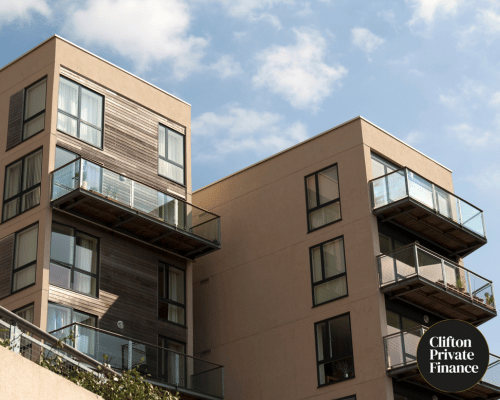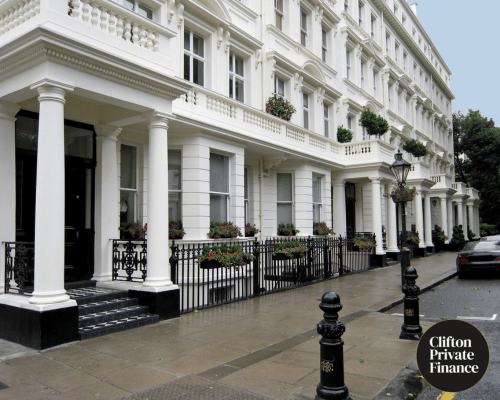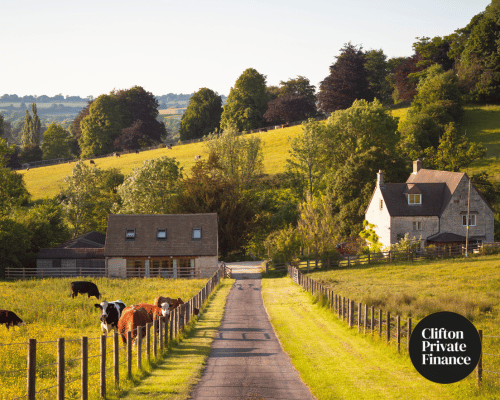What Does it Mean to 'Flip' a Property?
In basic terms, it is buying a property at a certain price and then adding value through renovation or refurbishment work and then selling the property for a higher price.
Property flipping can be highly profitable when you conduct thorough research and carefully manage your project. But in order to be successful, you’ll need to have a solid understanding of the local market and to develop realistic financial projections before pursuing a flip.
When to Use a Property Development Bridging Loan
Bridging loans can be used to facilitate many different development projects including:
- Extensions
- Conversions
- Structural amendments
- Refurbishments
(See our refurbishment loan guide)
As a general rule, traditional lenders are reluctant to provide finance for an unmortgageable property. A property is deemed unmortgageable by traditional lenders if the value of the property is below 40K or it does not have a functioning bathroom or kitchen. Unlike the finance offered by traditional lenders, bridging loans can be secured for the purchase and development of unmortgageable properties, making sure that developers do not lose out on attractive "flip" opportunities.
- Related: How to Get a Bridging Loan to Buy, Refurbish and Sell a House
- See Also: Understanding Short Lease Mortgages
Is House Flipping Risky?
Yes, house flipping can be risky, and it's important to understand these risks before entering the market.
Preparation is key when it comes to any kind of development project, and the more familiar you are with what could go wrong, the easier it will be to manage the project successfully.
Here’s what you should be wary of:
- Renovation Costs - Underestimating renovation costs is a common risk in house flipping. Unexpected repairs, materials, or labour expenses can quickly erode profit margins or even result in losses.
- Time Constraints - In order to minimise costs and maximise your ROI, you’ll need excellent project management skills. Delays in renovations or challenges in selling the property can lead to increased expenses, which can eat into your profits.
- Legal Risks - For some projects, you’ll need planning permission, and for properties like Grade-II-listed buildings, there will be additional regulations you’ll need to follow. Failure to comply with local regulations could result in fines, delays, or forced corrections, all of which can impact profitability.
- Property Condition - It’s common to find a diamond in the rough that you want to give a new lease of life. In many cases, you can find a great deal (especially if you buy at auction), and your hard work will result in a unique home with twice the value. But sometimes, you may bite off more than you can chew. Buying distressed properties risks encountering unforeseen structural issues, code violations, or environmental hazards, which can increase renovation costs and lower potential profits.
Case study: Read our case study below on how we secured bridging finance for a fix-and-flip in Fife
Is it Your First Time Flipping a Property? Here Are Some Tips
Once you have some development experience under your belt, mitigating the risks we’ve covered will likely be second nature to you. But here’s what you can do to ensure your first property flip project goes as smoothly as possible:
- Do Your Research: Take the time to learn about the property market in your target area, property values, renovation costs, and property regulations set by the local council.
- Create a Detailed Plan: Develop a comprehensive business plan outlining your goals, budget, timeline, target market, and exit strategy. Include detailed estimates for renovation costs, holding costs, and potential selling prices to ensure that your project is financially viable.
- Find the Right Property: Conduct thorough research to identify potential properties for flipping. Look for distressed or undervalued properties in desirable neighbourhoods with strong market demand. Consider factors such as location, condition, potential renovation costs, and potential resale value when evaluating properties.
- Perform Due Diligence: Before purchasing a property, conduct a comprehensive inspection to identify any structural issues, code violations, or other potential problems. Obtain multiple quotes from contractors for renovation costs and carefully review the property's financials to ensure that the numbers add up.
- Assemble a Team: Surround yourself with a team of experienced professionals, including real estate agents, contractors, inspectors, and legal advisors. Build relationships with reliable contractors and subcontractors who can help you complete the renovation on time and within budget.
- Manage Renovations Carefully: Develop a detailed renovation plan and schedule to guide the renovation process. Communicate regularly with your contractors to ensure work progresses smoothly and according to plan. Monitor expenses closely to avoid cost overruns and delays.
- Market the Property Effectively: Work with a real estate agent to develop a marketing strategy to attract potential buyers. Use professional photography, virtual tours, and staging to showcase the property's features and maximise its appeal. Price the property competitively based on market comparables to attract offers quickly.
One of the primary traps you can fall into as a beginner developer is treating your property flip like a pet project instead of a business investment. When faced with a myriad of choices when refurbishing your property, it can be tempting to lean towards your personal preferences. This is a cardinal sin when it comes to property development. Your decisions will need to be informed and profit-driven if you want to get the most out of your project. There are some exceptions to the rule, of course, but when you’re just starting out, it’s important to have a buyer in mind.
What’s a Good ROI for Flipping Houses?
A minimum ROI of 10-20% is a good target for house-flipping projects.
Property values and market dynamics can vary significantly across different regions in the UK. Properties in prime locations or areas experiencing gentrification tend to command higher selling prices and offer greater profit potential. The market can also influence what ROI you can expect. Factors such as supply and demand, interest rates, and economic conditions can influence the profitability of house-flipping projects.
A strong seller's market with high demand and limited inventory may present more lucrative opportunities. It’s also important to know how much it will cost to renovate a property. You can get a bargain at auction across the UK, but significant renovations can outweigh the buying costs.
Here's a breakdown of how ROI is calculated for house flipping:
- Calculate Total Investment: This includes the purchase price of the property, closing costs, renovation costs, financing costs, and any other expenses incurred during the flip.
- Determine Selling Price: Estimate the expected selling price of the renovated property based on market comparables and the property's condition and features.
- Subtract Selling Expenses: Deduct selling expenses such as real estate agent commissions, closing costs, and any other costs associated with selling the property.
- Calculate Net Profit: Subtract the total investment and selling expenses from the selling price to determine the net profit from the flip.
- Calculate ROI: Divide the net profit by the total investment and express the result as a percentage to calculate the ROI.
Case study: Read our case study below on how we raised £1.94m capital to redevelop and sell a family home in Wimbledon
What is the 70% Rule in House Flipping?
The 70% rule states that you shouldn’t pay more than 70% of the after-repair value (ARV) of a property, minus the estimated repair costs, when purchasing a property for flipping.
Here’s how it works:
A breakdown
- After-Repair Value (ARV): This is the estimated market value of the property after it has been renovated and is ready to be sold. The ARV is typically determined by analysing comparable sales (comps) of similar properties in the area that have been recently renovated and sold.
- Repair Costs: These are the estimated costs of renovating and repairing the property to meet market standards. Repair costs should include expenses for materials, labour, permits, and any other associated costs with the renovation process.
By adhering to the 70% rule, investors aim to ensure that they have a sufficient margin of safety to cover renovation costs, holding costs, and financing expenses and still achieve a desirable profit margin when selling the property.
How Long Does It Take to Flip a House?
The average property flip typically takes around 6 to 9 months to complete, but this can vary. It’s likely that your first property flip project may take a bit longer, which is where room flexibility on your finance terms may be helpful.
If extensive renovations are required, or if there are delays due to unexpected complications, you can expect the process to take up to 12 months. Similarly, experienced flippers with efficient project management skills may be able to complete flips more quickly, sometimes within a shorter timeframe of 3 to 6 months.
How to Finance a Property Flip in the UK
If you plan on undertaking a property flip, let us take the heavy lifting out of your finance application. At Clifton Private Finance, we have a team of expert financial advisers who can offer you tailored guidance.
Our award-winning bridging team can advise you on the options available to you and connect you with the most suitable lender for your circumstances. As a whole of market broker, we have relationships with specialist lenders, private banks, family offices and wealth managers. This offers us access to market-leading rates and bespoke finance solutions.











